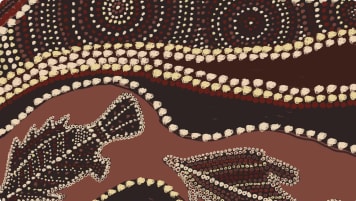Aboriginal Stone Arrangements of Western Australia
Aboriginal stone arrangements are a form of rock art deliberately placed in position by Indigenous Australians and associated with spiritual ceremonies or utilitarian purposes. This article for mature and senior travellers provides and couples and solo travellers with and understanding and appreciation of the Ancient historic landscapes they are travelling though on a small group tour.
6 Feb 21 · 9 mins read

Aboriginal Stone Arrangements in Western Australia
Odyssey Traveller continues to research and write blog articles for its small group tours. These are intended to assist with the senior and mature traveller’s journey into the Australian outback to see, learn and appreciate this fascinating part of the Australia environment.
Aboriginal stone arrangements are a form of rock art deliberately placed in position by Indigenous Australians and associated with spiritual ceremonies or utilitarian purposes. Although many are difficult to date, they are the only prehistoric structures associated with prehistoric Aboriginal culture, believed to have been part of their practices for a very long time. Western Australia in particular is home to a wide range of stone arrangements in various forms including standing stones, piles of stones heaped into cairns, lines and walls, and lizard traps.
This article explores the different forms of stone arrangements, their significance and meaning to Aboriginal people, and various key sites in Western Australia. Much of the information is sourced from anthropologist Peter Randolph’s peer reviewed article “Some Indigenous Stone Arrangements in Western Australia” published in Records of the Western Australia Museum, Supplement 79 in 2011. Other sources of information are linked to throughout the article.
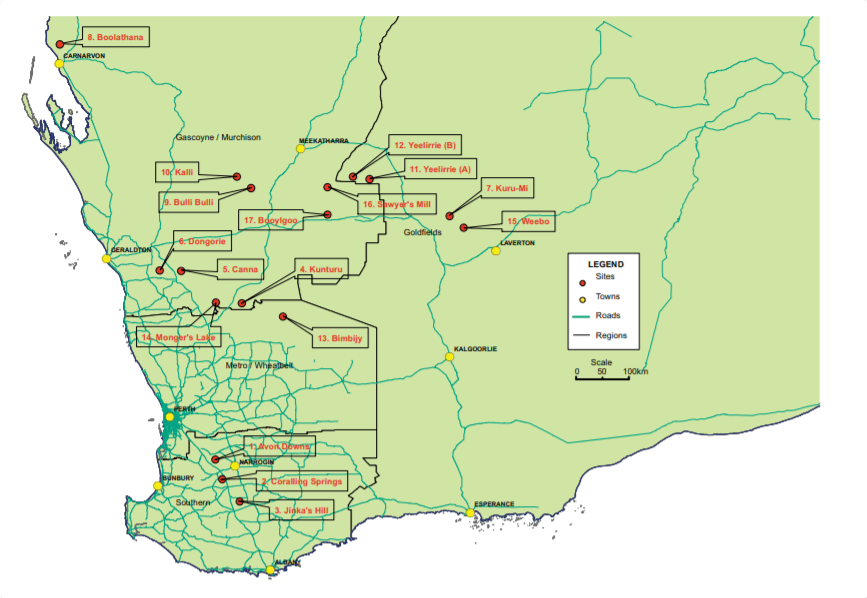
Forms of Stone Arrangements in Western Australia
A range of diverse in form stone arrangements exist across Western Australia , the function of the stone arrangements varies from hunting to rituals. Randolph explains that the main types include:
- Standing stones: set in the ground, wedged in crevices or supported by other stones
- Cairns: simple piles, piles used for ceremonial purposes, mounds or ridges of stones.
- Lines / walls: continuous rows, multiple tier rows, discontinuous rows, straight/ curved/meandering rows.
- Compound sets: combinations of some or all the above.
- ‘Lizard traps’ – slabs of granite placed on or propped up by low dry-stone walls or smaller exfoliated pieces to make a cavity beneath them.
Significance and Meaning of Indigenous Australian Stone Arrangements
Ethnographic information from across Australia shows that stone arrangements can have major symbolic and spiritual significance for traditional site owners, with past studies demonstrating that they display a wide range of characteristics. Some of the meanings are considered to be as follows:
- Individual markers can act as a ‘memorial’ to a significant event.
- Long lines can lead to an initiation site.
- Or stones can be placed to form the shape of an ancestral being
- Or to define a ceremonial worship.
Furthermore:
- Upright standing stones are particularly associated with initiation sites
- As well as ceremonies to increase and manage the social and economic benefits of natural resources.
- Individual slabs meanwhile might represent creator beings from the Dreaming who have metamorphosed into stone.
In order to put forward interpretations of sites, the involvement of local indigenous elders who hold deep cultural understanding about the stones’ arrangement is vital. With the sites’ meanings so closely tied to specific detail of totemic mythology, interpretation merely by inspection is impossible.
Unfortunately, much knowledge about the specific mythological significance and purpose of many arrangements, often millennia old, has been lost. With the rapid social disintegration and migration that closely followed first contact with Europeans, custodial succession of various places was broken.
This means that today, these sites are not well understood by their custodians in traditional terms in contrast with other areas of unbroken custodial succession. The only thing that is certain is that they are connected to the Dreamtime stories, representing either totemic beings or enclosed areas where special events took place.
Still, even when elders have no information about sites, cultural knowledge can guide interpretations. For without any assistance from elders, interpretations are merely guesswork and risk offending the traditional custodians, something that is to be avoided.
Key Aboriginal Stone Arrangement Sites in Western Australia
Murujuga
Murujuga, the Aboriginal traditional name for the Dampier Archipelago located in the Pilbara region, is a critically important cultural heritage landscape. It hosts several stone features including circular stone arrangements, fish traps, domestic stone structures, and tall standing stones which are comparable in cultural significance to megalithic monuments in Europe.
The standing stone arrangements are placed both individually and in several clusters; one significant sacred site features 96, the largest collection of standing stones in one area in Australia. The reasons for their erection and what they signify remains a mystery.
The area also contains the world’s largest and most diverse concentration of ancient petroglyphs. More than one million rock art engravings of figurative images are displayed, some dating back as far 45,000 years. The engravings tell stories of songlines and the Dreamtime and capture various animals in an extraordinary diversity of style, mode of production and aesthetic repertoire.
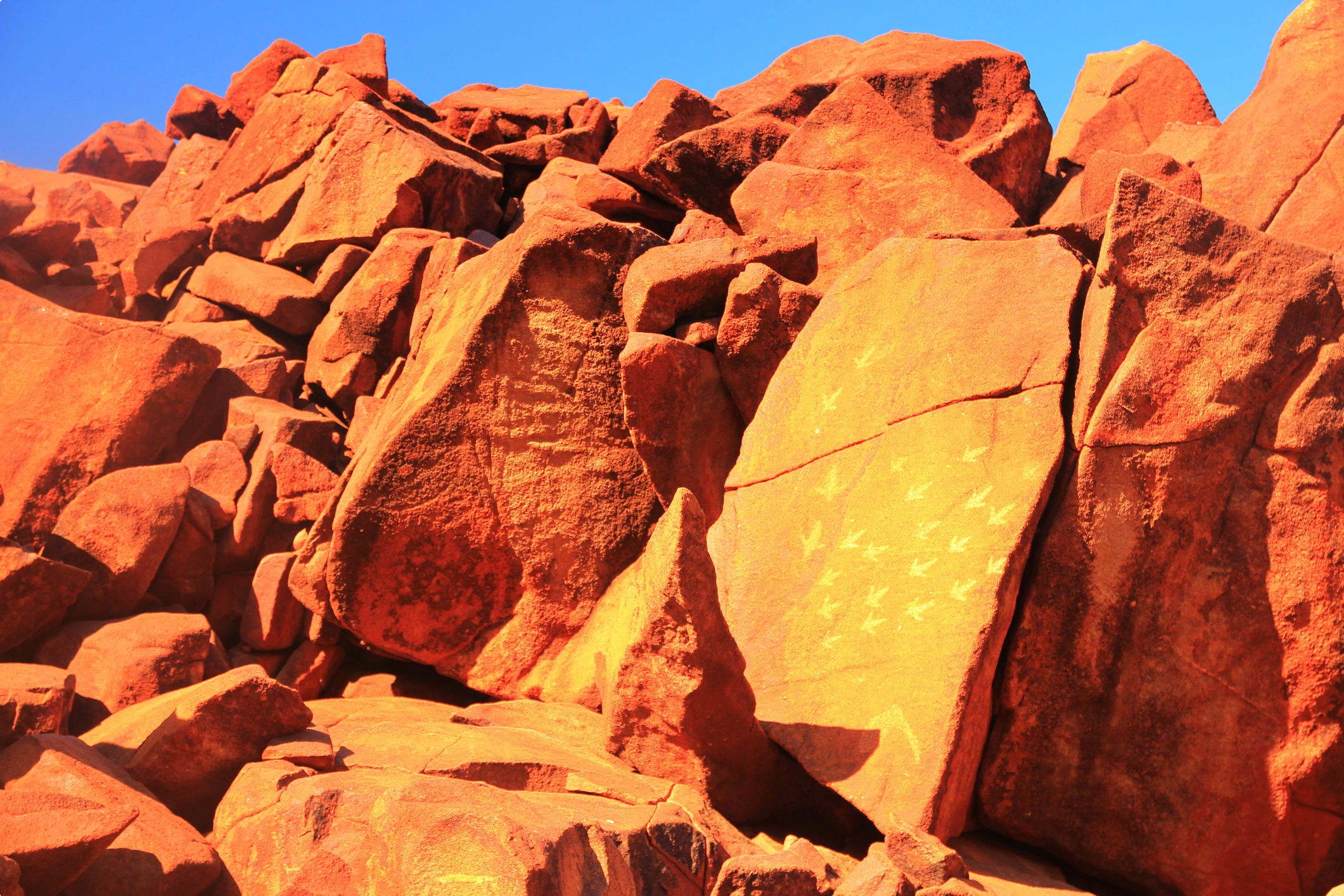
Partjar
The canyon of Partjar in the Clutterbuck Hills, Goldfield-Esperance region of Western Australia, has a wide reputation as a sacred site on the track of the totemic Marsupial-cat called Partjata. In the local dreamtime narrative, a war party of totemic Marsupial-cat-people stopped here on their way to Yakuri, another site in the Clutterbuck Hills. During their stay at Partjar an old man in the party circumcised a novice named Kawan-kawan.
The natural features of the canyon are connected to this storyline. For example, a natural crevice overlooking the billabong at the bottom of the canyon is said to be the meatus of the novice’s penis; and a tall ghost gum at the billabong is the novice himself.
Stone arrangements here are also connected to the storyline. Up-canyon, there is an upright slab of rock about 61cm (24”) high, supported by a circle of smaller stones around the base. This is the first of a series of 23 similar upright slabs, ranging from 30cm (12”) to 76cm (30”) in height and standing at irregular intervals in a row that extends about 1000 feet farther up the canyon. Included in this series is a cluster of about a dozen upright slabs along the east side of the canyon.
At the end of the line made by these upright rocks is a small gravel flat on a terrace just east of the creek bed. Out on the flat stands a 110-foot-long rock alignment containing 436 rocks, 39 of them upright.
The upright rocks in the alignment as well as those leading up to it are said to be totemic pukutjitjara, translated as “those who have hair-buns”. After a novice has been circumcised, he wears for the first time in his life a hair-bun (pukutji) bound up with hair-string. The upright rocks are the totemic Marsupial-cat-men wearing their hair-buns following the novice’s circumcision.
The only exception is a large upright rock at the nth end of the alignment, which stands 16 inches high, and has an irregular stripe of red ochre around it just below the top. This rock is Kawan-kawan’s circumcised penis, the ochre being the blood form the fresh wound.
Kunturu
The Kunturu Aboriginal site is located on Lake Moore, a large dry lake about 370km northeast of Perth is a fascinating site. It consists of 437 upright and 91 fallen, dark, elongated pieces of schist arranged in a 200-foot-long serpentine spiral that tapers off across the stark white of the dried salt lake. The spiral itself encloses a cluster of quartz boulders imbedded at its centre.
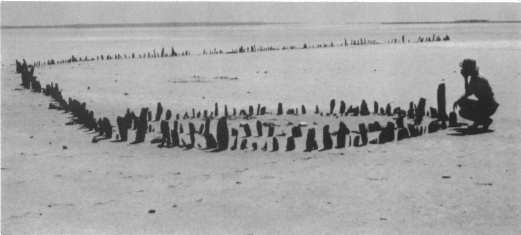
Four smaller alignments of upright stones extend from the shore. In the shoreline cliff directly opposite the southernmost of these small alignments is a small man-made cliff consisting of long rock slabs side by side to form the roof to a crevice in the cliff.
The arrangements of the stones created a trap for Emus, Kangaroos and extinct megafauna.
Interpretations of the relationships of the cave and the southernmost alignment suggest that this was a sophisticated game trap. A man would have waited inside the artificial save, ready to spear emus or other animals coming for water. These animals would have avoided the upright rocks of the alignment by moving through a gap, passing close enough to the cave for an easy shot with a spear.
The other straight rock alignment would have had the same purposes of deflecting the game toward the spring or out onto the bed of Lake Moore. Here they would be bogged in the slimy brown mud just beneath the salt crust.
Numerous informants from local Aboriginal groups have said that this was also an important ceremonial site visited by both local Aboriginals and by people from further east, who reached it by crossing the lake along a hard trail on the lakebed. It is believed that the dreamtime Water-snake (here called Pimara) came across the lake here, leaving the trail behind as his track. He then turned into the large stone alignment and his spirit resides inside the freshwater spring nearby.
Avon Downs
The stone arrangements at Avon Downs, a farming property in the South-West of Western Australia, consists of two parallel lines of standing stone and other aligned stones approximately 100m in length. There are twenty-four standing stones and a further seven that have been interpreted as fallen stones ranging in height from 36 cm (14”) to 80cm (31”). All the stones are locally available granite.
There are also seven mysterious structures alongside the alignment measuring 90mm x 90mm and consisting of low three-sided dry-stone walls of small thin exfoliated granite pieces that are covered by a single slab. One interpretation is that they replicate a common habitat for small lizards and have therefore been called ‘lizard traps’, although there is no substantial evidence that they were built for such a purpose.

Kurumi
The Kurumi Aboriginal site, located in the North Eastern Goldfields region, is named after both the seed-producing food plant and the actual seed of the plant that is associated with the site. It consists of two distinct stone arrangements on and adjacent to a clay pan.
The first consists of approximately thirty small piles of stones to the west of the pan. The piles vary from between fifteen to twenty to as few as three to four stones per pile. There is a recognizable line of quite large dark stones extending along one side of this site with several other stones seemingly randomly placed behind it. In from of the line, embedded in the clay pan, are two other isolated stones.
The second arrangement lies on a sand dune on the margin of the clay pan. It consists several cairns of stones of varying sizes. In the centre is a single cairn approximately two metres across and one metre high. Within a few metres surrounding this are several smaller cairns, all roughly similar in size.
Local Aboriginal people have informed researchers about the general meaning of this site. The first arrangement represents a windbreak, behind which various community members waited while a husband and wife went out onto the clay pan to harvest and prepare a damper out of Kurumi seeds. Following the meal, the men conducted an important dancing ceremony at the second arrangement; this site represents a group of dancers, surrounded by a series of campfires.
Kalli
The Kalli stone arrangement, located in the Shire of Murchison in the Mid West region of Western Australia, includes the remnants of two sets of alignments that are essentially the same (a principal figure and another to the south-west).
The principal figure consists of lines of small boulders mostly abutting one another to form a seemingly formless unenclosed shape approximately 20 x 15 m, with two roughly elliptical additions at one end. There also numerous short lines and small clusters of stones, as well as several cairns, at the site.
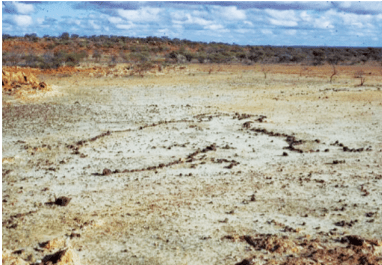
Randolph suggests one interpretation that this is a giant mythical stone man lying down, and the arrangement may be a link to male ritual. However, he admits that there is little chance of confirming such an interpretation due to the complexity of the arrangements and the likelihood that some have been dismantled to create new alignments.
Tour of Aboriginal Australia
Travellers with an interest in learning more about the Aboriginal heritage of Australia may want to check out our various outback Australia tours.
These include visits to:
- Archaeological sites including the Madjedbebe rockshelter and the extensive collection of ancient Aboriginal rock art at Kakadu NAtinal Park as part of our tour of Kakadu and Darwin
- The ancient indigenous sites including Lake Mungo and the Budj Bim Cultural Landscape as part of our tour of the Southern States of Australia;
- The important cultural site of Wilpena Pound on our tour of the Flinders Ranges;
- The ancient rock art in the Kimberley, Western Australia;
- The Brewarrina Fish Traps in outback Queensland;
- Uluru and Kata Tjuta in the Northern territory.
Every Odyssey guided tour is designed especially for mature and senior travellers, who want an authentic and informed experience of their destinations. Our tours aren’t the typical tourism Australia holiday – Blue Mountains, the Great Barrier Reef, and the penguin parade on Port Phillip Island. Instead, we pride ourselves on getting of the beaten path and making you think about Australia and New Zealand in new ways. We move in genuinely small groups – usually 6-12 per tour – and all tours are cost-inclusive, encompassing accommodation, attraction entries, and transport. For more information, click here, and head to this page to make a booking.
Articles about Australia published by Odyssey Traveller:
- Uncovering the Ancient History of Aboriginal Australia
- Aboriginal Land Use in the Mallee
- Understanding Aboriginal Aquaculture
- The Kimberley: A Definitive Guide
- Purnululu National Park, Australia
External articles to assist you on your visit to Australia:
Related Tours

13 days
May, Jun, Jul, Aug, SepSmall group tour of Australia's Kimberley
Visiting Western Australia
Escorted small group tour of the Kimberley. We explore and visit The Bungles, Bell Gorge, Mitchell plateau & Halls Creek in the dry season. Amazing landscapes intertwined with Aboriginal communities resident more than 45,000 years.
From A$15,390 AUD
View Tour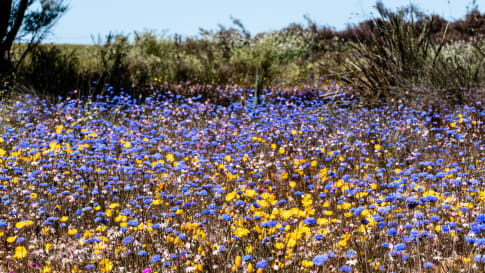
15 days
Aug, SepWildflowers tour of Western Australia
Visiting Western Australia
Escorted small group tour for senior and mature travellers as a couple of solo traveller. Upto 12 people of WA's Wildflower regions including Esperance and the Fitzgerald river National park. Local guides and program leader share knowledge about this fascinating region whilst in bloom.
From A$12,250 AUD
View Tour
days
Jun, Jul, Sep, Feb, Mar +1Darwin and Kakadu small group tour
Visiting Northern Territory
Explore and learn as part of a small group tour for seniors on this package tour to Darwin and Kakadu National park, a UNESCO world heritage site. This program also visits Arnhem land. Our focus is on ecology, landscapes and history on this 14 day program in the far north of the Northern Territory.
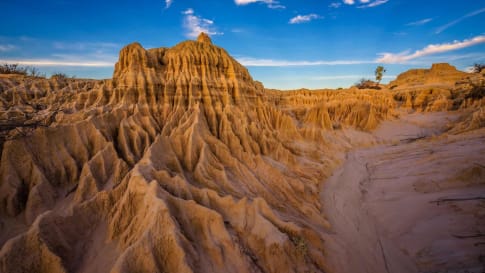
days
Mar, May, Aug, Sep, Oct +2Small group tour of World Heritage sites and more in the Southern States of Australia
Visiting New South Wales, South Australia
Discover the World Heritage Sites of the southern states of Australia travelling in a small group tour. A journey of learning around the southern edges of the Murray Darling basin and up to the upper southern part of this complex river basin north of Mildura. We start and end in Adelaide, stopping in Broken Hill, Mungo National Park and other significant locations.
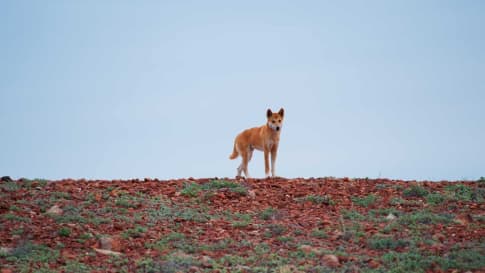
days
Apr, May, Jul, Aug, Oct +2Small group tour of Australia's Flinders ranges
Visiting South Australia
Escorted small group tour of the Flinders range in South Australia from Adelaide. Learn about Coober Pedy, Wilpena pound and water system of Lake Eyre as we explore and learn also about the history of the people who explored the Flinders.
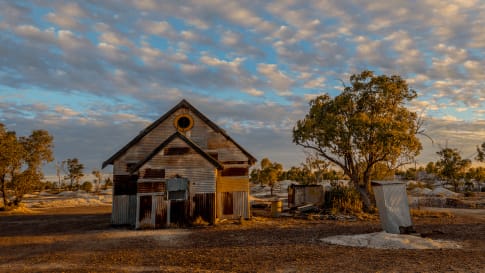
days
Mar, Apr, May, Jul, Aug +2Small group tour of outback Queensland
Visiting New South Wales, Queensland
To Dubbo and back, this small group tour takes you to learn about the Brewarrina fish traps, we travel high up into North Queensland to see the Dinosaurs of Winton and incredible Aboriginal rock art at Cathedral gorge and learn about opal mining and the history of Lightning ridge.

days
Apr, May, Jun, Jul, Aug +3Small group tour exploring Alice Springs and Uluru-Kata Tjuta National Park
Visiting Northern Territory
Explore and learn about historic Alice Springs, The MacDonnell ranges, and Uluru-Kata Tjuta National Park. This escorted small group tour for mature and senior travellers, travelling as a couple or solo travellers also visits the Hermannsburg Lutheran mission plus Henbury meteorite site learning about the Aboriginal outback and contemporary art.

days
Apr, Jun, Aug, Nov, Mar +2Exploring Alice Springs and Uluru-Kata Tjuta National park by Motorbike
Visiting
Explore on a Motorbike tour in the Outback and learn about historic Alice Springs, The MacDonnell ranges, and Uluru-Kata Tjuta national park. This escorted small group Motorbike tour for mature and senior travellers, travelling as a couple or solo travellers also visits the Hermannsburg Lutheran mission plus Henbury meteorite site learning about the Aboriginal outback and contemporary art.
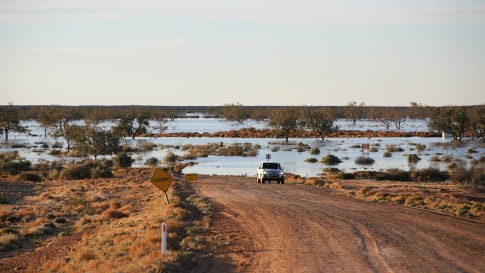
65 days
MarLong tour of Australia for a small group
Visiting New South Wales, Northern Territory
Small group tour for senior couples and solo travellers touring Australia. Travelling through the outback and visiting many of the famous sights as well as off the beaten track locations. Learn about the history of the people who explored the deserts, from indigenous communities to Europeans, as well as Burke and Wills, visit White Cliffs, Marree and far north Kakadu and the Kimberley.
From A$48,995 AUD
View TourArticles

Aboriginal Kinship systems
Article about Aboriginal kinship to assist small group tours in Australia understanding Ancient aboriginal society and the contemporary view. Kinship influences the relationships including aboriginal trading routes.

Aboriginal Rock Art in the Kimberley, Australia
The Kimberley is explored on a small group tour for mature and senior travelers, couples or singles. Both Aboriginal community is studied and an appreciation of the wet and dry seasons. This guide on the Kimberley assists the traveler as you start from Broome and travel round via Halls creek and Purnunulu national park over some 17 days in a group of up to 12 people.

Aboriginal Songlines
Songlines trace the journeys of ancestral spirits who created the land and all natural phenomena. The creation stories as well as practical knowledge needed for survival in outback Australia. We experience this knowledge on our small group tours into Outback Australia.

Ancient Aboriginal trade routes of Australia
Ancient Aboriginal trade routes of Australia Trade was a central part of life for Aboriginal people prior to the British settlement of Australia. Trading routes criss-crossed the nation, dispersing goods, information, technologies and culture thousands…
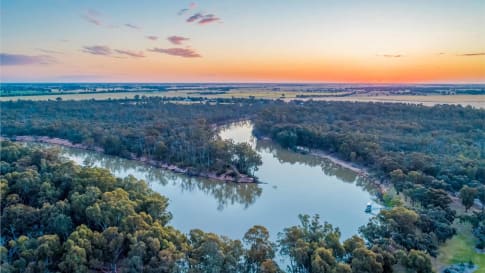
Appreciating Australian River Systems
Appreciating the linking of the river network into the Australian, history, culture and landscape on a small group tour for mature and senior travellers of couples or solo travellers is an integral part of understanding the continent of Australia and Aboriginal settlement.
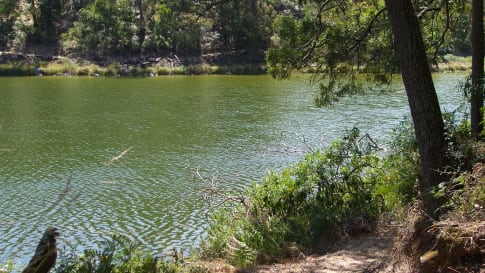
Budj Bim Cultural Landscape, Victoria
Article for escorted small group tour about this program visiting UNESCO World Heritage sites in Victoria, South Australia & NSW. Exploring and learn about Budj Bim cultural landscape for mature and senior travellers .

Contemporary Aboriginal Paintings
Article introducing contemporary aboriginal art to mature and senior travellers taken a escorted small group tour into Outback Australia's Northern Territory, Kimberley, Queensland, New South Wales or South Australia seeking to learn about Aboriginal history and culture.

David Unaipon
David Unaipon made several significant contributions to Australian society in scientific ideas, literature, and Aboriginal affairs. An escorted small group tour for mature and senior travellers shares his contribution in outback Australia and the cities.

Madjedbebe Archaeological Site, Northern Territory
Madjedbebe Archaeological Site, Northern Territory Near the border of western Arnhem Land and Kakadu National Park in Australia’s ‘top end’, Madjedbebe rock shelter (formerly known as Malakunanja II) is the oldest archaeological site in Australia,…
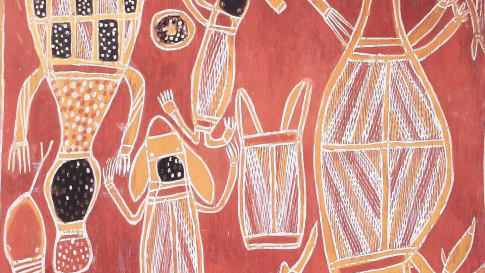
Milingimbi Art
Milingimbi art, studied and discussed on a small group tour for mature and senior travellers interested in history and art. Milingimbi is one of a number of different acclaimed art styles of the Aboriginal community history.
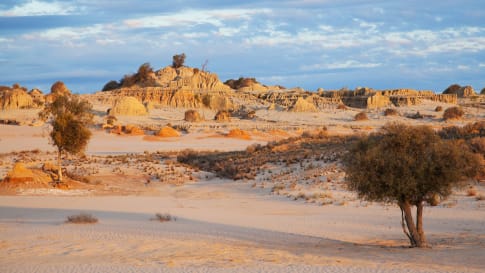
Mungo Man and Mungo Lady, New South Wales
Part of a small group tour of World heritage sites on Victoria, NSW & South Australia for mature and senior travellers. Learn and explore in the Mungo National park about Aboriginal settlement and the fauna and flora of this National park.
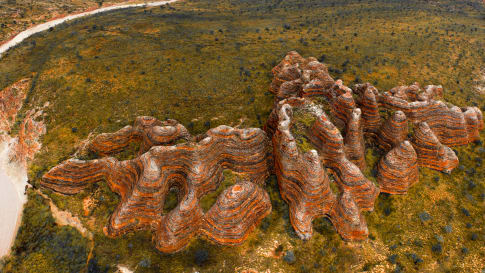
Purnululu National Park, Australia
Read about one of the most remote World heritage sites on Earth. Odyssey takes you to visit as part of a small group package tour for mature and senior travellers in the Kimberley for couple and single travelers We travel in the dry season from Broome via Lake Argyle to this National park.

The Arrival of Aboriginal Australians on the Continent
Tracing Aboriginal history via an outback small group tour for mature and senior couples or solo travellers provides an intriguing learning platform about Australia, rock art, trading and culture that traces a history possibly some 120,000 years ago.

The Australian Outback: A Definitive Guide
Explore learn and consider what is the outback in this article. For mature and senior travelers considering joining a small group package tours into the outback to see, learn and explore about this unique place, not only the landscape but the Aboriginal approach to living. On each of the tours for couples and the single traveler you learn something different but fascinating, from Outback Queensland, the Flinders, Broken Hill and the Kimberley and the wildflowers all contribute to this question, what is the outback?

Uncovering the ancient history of Aboriginal Australia
For small group escorted tours of Australia in Queensland, Victoria, New South Wales, South Australia, Tasmania, Western Australia and the Northern Territory a guide on Aboriginal culture for mature and senior travellers.

Understanding Aboriginal aquaculture
Aboriginal communities had the ability to harvest fish some 20,000+ years ago. Creating major centres of trade and cultural exchange, and supported permanent communities. Discover and learn more on a escorted small group package tour to Victoria, South Australia & Queensland for mature and senior travellers, couples and solo travellers interested in learning.
